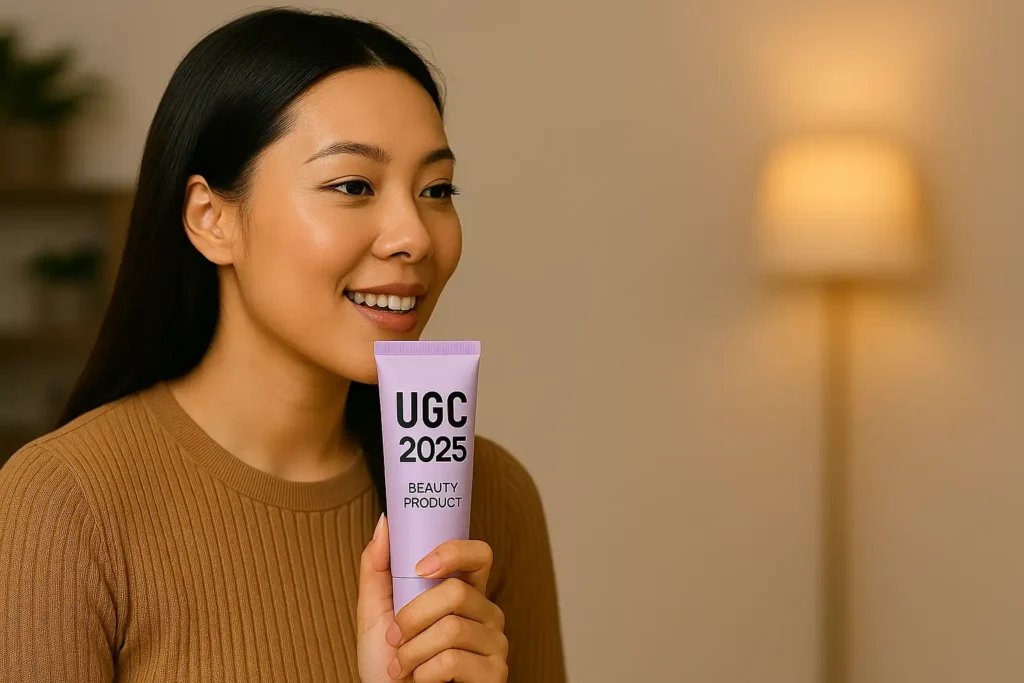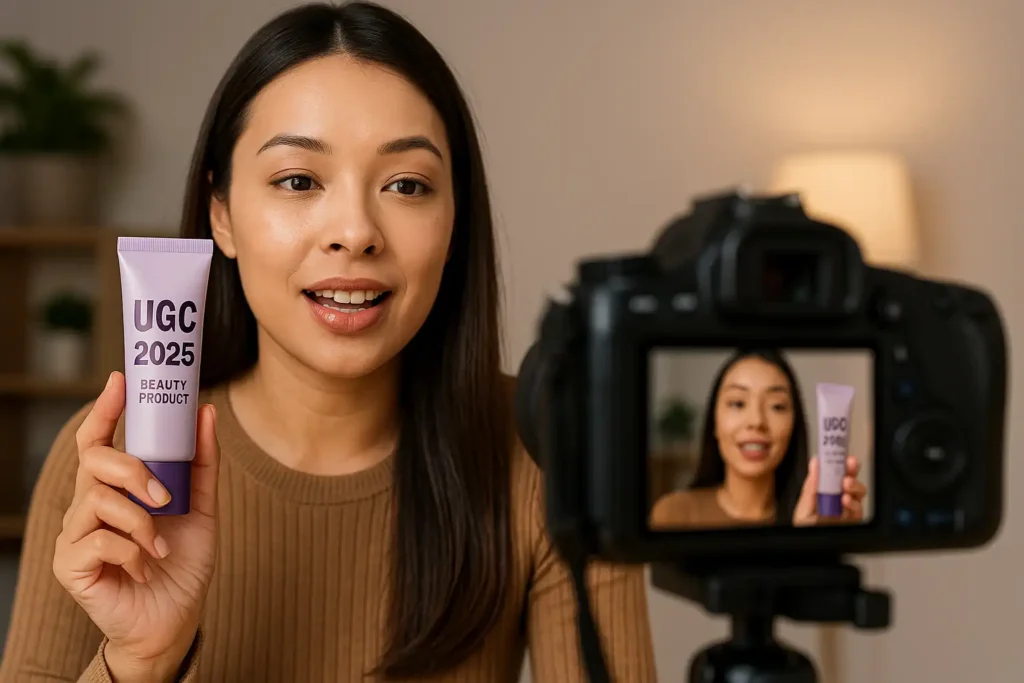AI UGC Is Booming in 2025
User-generated content (UGC) refers to any form of content – text, images, videos, reviews, etc. – created by real users or customers about a brand, product, or experience, rather than by the brand itself. Classic examples include a customer’s Instagram photo of them using a product, an unboxing video on YouTube, or a testimonial posted on social media. UGC has become a cornerstone of modern marketing due to its authenticity and trust factor.
In fact, 84% of people are more likely to trust a brand that incorporates UGC, and 77% say UGC-driven campaigns influence their purchasing decisions (Stackla Report).
Why User-Generated Content Matters in Marketing
The value of UGC lies in authenticity, trust, and engagement. UGC is seen as 2.5x more authentic than brand-created content, and 55% of consumers trust it more than other marketing (Nielsen Norman Group). It drives real results too—UGC-based ads can yield 4x higher click-through rates and a 50% lower cost-per-click compared to brand-generated creative (TINT UGC Benchmark Report).
Key Benefits of UGC:
- Higher Credibility – 62% of consumers are more likely to engage with UGC than branded posts.
- Better Engagement – UGC can boost time on site by up to 90%.
- Lower Costs – 85% of marketers say visual UGC is more cost-effective than brand shoots.
- Community Building – Half of Gen Z consumers want to be featured by brands on social media.
Where UGC Comes From
Traditionally, UGC comes from:
- Social media posts
- Product reviews
- Customer testimonials
- Community Q&As and forums
- Unboxing or tutorial videos
93% of marketers say UGC performs better than branded content in campaigns (Nosto Study).
How AI is Revolutionizing UGC Creation in 2025
Advancements in generative AI have enabled brands to create UGC-style content (text, images, videos, and voiceovers) at scale, without needing to rely solely on real customers.
This is driven by tools like GPT-4, DALL·E, and Midjourney, which can generate realistic user-style content in seconds. As a result, businesses can now simulate UGC, accelerating content creation for e-commerce, social media, and advertising.
However, the rise of AI-generated UGC raises concerns about authenticity. Consumers still value real voices—so it’s crucial to use AI responsibly and transparently to maintain trust.
AI-Generated Text UGC
Tools like ChatGPT, Jasper, and Copy.ai allow marketers to generate:
- Product reviews in casual, first-person tone
- Social captions with emojis and hashtags
- Testimonials mimicking real user experience
- Q&A content for e-commerce product pages
Amazon’s AI review summarization feature now provides quick overviews of customer feedback, powered by generative AI (Amazon Blog).
AI-Generated Images and Product Photos
Image generation tools like Midjourney, Flair.ai, and Pebblely allow for realistic, user-style visuals:
- Product-in-use photos
- Lifestyle imagery for ads or Instagram
- AI models of different body types, backgrounds, and skin tones


Levi’s partnered with Lalaland.ai to test AI-generated models for product shots, increasing inclusivity and reducing production costs (Levi’s Announcement).
AI-Generated Videos and Avatars
Using platforms like Synthesia, HeyGen, and D-ID, marketers can create:
- Video testimonials from AI avatars
- Unboxing-style explainer videos
- UGC-style short videos for TikTok and Reels
- Virtual influencers tailored to brand voice
Brands like Prada and Red Bull have run campaigns with AI-generated influencers such as Lil Miquela, highlighting the scalability and cost benefits of virtual personas (Business of Fashion).
AI-Generated Voiceovers and Audio
Voice AI tools like Murf, Resemble AI, and Descript are used to:
- Generate realistic customer-style voiceovers
- Narrate reviews or stories in different languages and tones
- Repurpose written testimonials into podcasts or reels
These tools are increasingly used to enhance video ads and product demos without hiring voice actors, enabling fast, localized content for international brands.
Top AI Tools for UGC Creation (2025)
| UGC Format | Tools | Use Cases |
|---|---|---|
| Text | ChatGPT, Jasper, Writesonic | Reviews, testimonials, captions |
| Image | Midjourney, Flair.ai, Pebblely | Product shots, lifestyle images |
| Video | Synthesia, HeyGen, D-ID | Avatar videos, demo clips, UGC-style ads |
| Voice | Murf, Resemble AI, Descript | Narrated reviews, multilingual content |
| Moderation | Adobe AI, Brandwatch, Sprinklr | Curating and filtering real UGC |
Platforms like AdCreative.ai and Magic UGC also specialize in fast, ad-ready content that mimics authentic customer videos.
Real-World Examples of AI-Generated UGC
- Coca-Cola’s “Real Magic” campaign featured AI-generated artwork inspired by fan input, used in billboard and digital campaigns (Create Real Magic).
- Levi’s used AI models to increase diversity in product displays, providing scalable fashion visuals.
- Virtual influencers like Lil Miquela and Prada’s digital brand ambassador now post content styled like authentic creators.
- Sephora uses AI to moderate and highlight the most useful reviews, improving the shopping experience.
- Airbnb personalizes UGC like reviews and photos based on the viewer’s preferences using AI algorithms.
- Lead Saver AI created the images for this article with AI UGC
Pros and Cons of AI vs. Human UGC
| Factor | Human UGC | AI-Generated UGC |
|---|---|---|
| Authenticity | Highest trust factor | May be perceived as fake if not disclosed |
| Scalability | Requires time and incentives | Instant, infinite content generation |
| Cost | Free but inconsistent | Low-cost once setup |
| Creative Control | Limited to user contributions | 100% brand-controlled |
| Emotional Impact | Genuine connection | Simulated but customizable tone |
| Legal Risks | Low if usage rights granted | Higher risk without proper disclosure |
The FTC has issued guidance prohibiting fake AI-generated reviews and influencer deception (FTC Ruling).
Final Thoughts: Embrace AI-Generated UGC with Transparency
Artificial intelligence is rapidly transforming how brands approach user-style content creation. By leveraging AI tools, marketers can:
- Generate UGC-like content at scale
- Reduce costs and time to market
- Personalize content by audience, format, or channel
However, trust remains key. Brands that use AI-generated UGC ethically—while blending it with real content—will maintain credibility and build deeper customer relationships.
As tools get smarter and more accessible, marketers that combine the power of AI with the authenticity of human experiences will dominate the digital landscape in 2025 and beyond.

